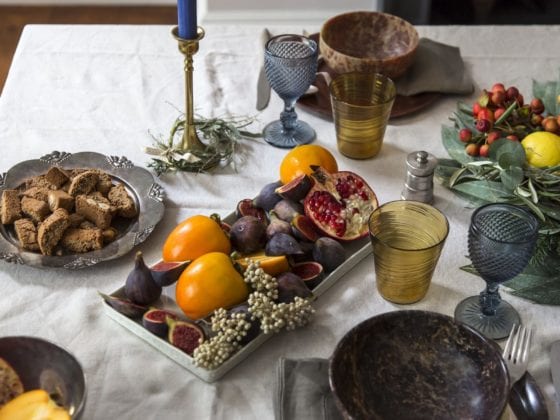In the winter months especially, my bed becomes a refuge as I am prone to being chilly. On my days off, I like to snuggle up in the afternoon to stay warm as I journal or read a book. While this bed’s a sacred space to me, it’s really nothing special.
I bought the full-size mattress with a $300 “bed budget” before the affordable bed-in-a-box became a well-advertised trend. These days, the floral Ikea duvet cover isn’t quite my style, and sharing a full-sized bed isn’t quite my husband’s style. Yet, despite these minor annoyances—I’m grateful for it.
Many mornings, as I lie in bed and stare at my ceiling with sleepy eyes, I think about what my grandma told me when I was young.
“When you wake up, thank the Lord first thing.”
She wasn’t ever too specific about what I should be thanking God for—just that it was essential to do. First things first, be thankful before my brain was full of less essential thoughts clamoring for my attention—What will I wear today? Did I forget to switch the laundry last night? Do I have any meetings this afternoon? What are we having for dinner?
“When you wake up, thank the Lord first thing.”
I’m okay at this, but I’d like to be better at it. Gratitude can seem like a mysterious feeling that happens to me when things are going well, like a fleeting cousin of happiness that just happened to be in town for the weekend. Research would disagree. Feeling thankful is within my control.
Feeling thankful is within my control.
In fact, research shows expressing gratitude (directed toward God or elsewhere) can benefit individuals in many ways, including physical and psychological health, happiness and better sleep. Studies show gratitude can play a role in relationships, too, and that expressing gratitude toward a romantic partner can increase satisfaction in both the individual and the relationship. There’s even significant evidence that grateful attitudes can improve workplace performance.
That mattress I mentioned earlier—I bought it back in 2014. It was my first real “adult” purchase when I signed a lease with Merry, my post-college roommate who was incredibly faithful to not only our shared space but our shared interests, too. She invited me along for the ride to hear how her day went and process mine, watch Friends even when there were better things to watch and eat Ramen every once in a while just because.
She was generous to include me in her family life, as well. Before I knew it, I’d be on the receiving end of emails with titles like, “Dec. 17 thankful.” The Tucker family was a great example of everyday people with everyday problems practicing gratitude in a way that really inspired me. These emails were just simple lists full of things like hot cocoa, above-average temperatures and “a good vodka martini.”
[They were] everyday people with everyday problems practicing gratitude in a way that really inspired me.
Just knowing that these lists existed gave me a reason to smile. I love this opportunity to focus on the small wins, especially when they seem almost too small to be worth mentioning.
Millennials are into self-care. We’re here to tell you about our skincare routines, why we’re into double cleansing and whether we’re pro- or anti-retinol. When it occurred to me that practicing gratitude—year-round—is perhaps the purest form of self-care.
I asked my friends how they prioritize gratitude. I learned Kat writes a list, and Stephanie bakes for those she wants to thank. Mara’s started a dinnertime conversation with her husband and two young sons, focusing in on modeling gratitude and expressing it verbally. Michelle takes a moment to slow down, zoom out and watch her family “just be themselves,” noticing “it makes [her] grateful for who they are just being them.”
Claire reminds herself many of her “have to’s” are really “get to’s,” and the kids are cute enough to warrant having to do their laundry (my words, not hers.) Breigh speaks her thanksgiving audibly, as well as journals, in what she’s affectionately named her “Dear Universe” time. Jade sends snail mail.
Gratitude can take many forms. It can be prayer, self-care, list writing or emails. Handwritten letters, words of affirmation, a pumpkin-flavored crumble baked with thought. While we’re preparing to enter the season of turkey eating and pie, a gentle reminder: Thanksgiving is available to you, 365 days a year.
How can you learn to practice gratitude year round? What are some practical forms of thanksgiving you can add into your routine?
Image via Frank Terry, Darling Issue No. 7











1 comment
Such a great post, especially for today. Thank you for the pointers! 🙂
–
Charmaine Ng | Architecture & Lifestyle Blog
http://charmainenyw.com